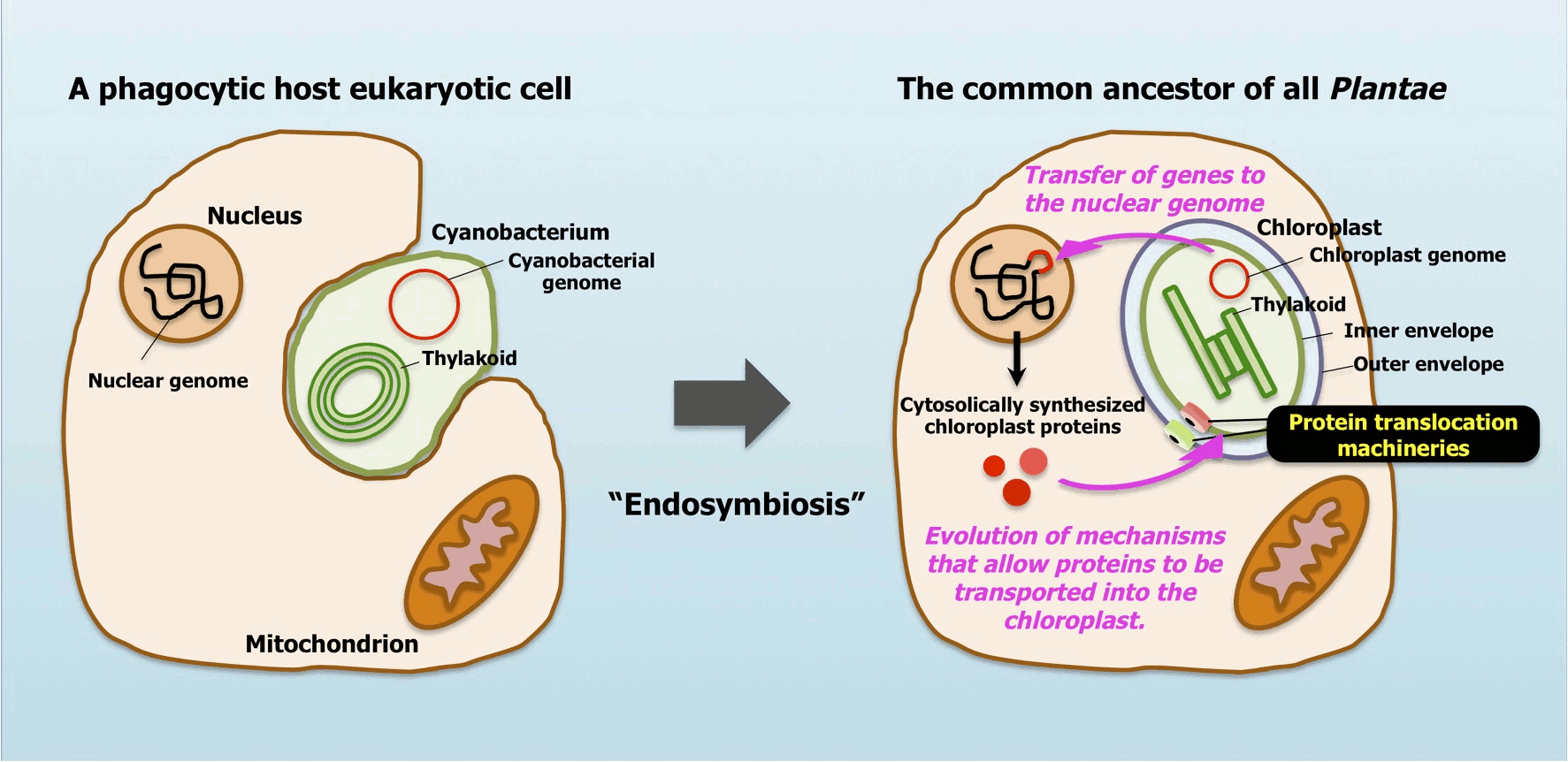W E L C O M E

We are seeking a Master course or PhD course Student with an interest in one or more of the following research area: molecular biology, plant biology, biochemistry, and molecular genetics. If you would like to join our laboratory, please contact us .
In addition, to promote international scientific cooperation, the Japanese Society for the Promotion of Science (JSPS) encourages highly qualified researchers from the worldover to come to and conduct joint research activities. JSPS offers various postdoctoral fellowship programs (see JSPS)
If you would like to join our laboratory, and if you would like to apply for the fellowship, please contact us in the first instance.
In plants and algae, the eukaryotes, photosynthesis is carried out in a specialized organelle called chloroplast. It is now widely accepted that virtually all chloroplasts in today’s photosynthetic eukaryotes derive from one fairly rare primary endosymbiotic event with a cyanobacterium-like ancestor thought to have occurred more than a billion years ago. In the course of evolution, massive transfer of genes from the endosymbiont to the host’s nuclear genome occurred, accompanied with the development of the protein transport system that allows these nuclear-encoded chloroplast proteins back into the endosymbiont. Extant higher plants can synthesize only ~100 proteins inside the chloroplast but must import such 2000-3000 different cytosolically-synthesized nuclear-encoded proteins, across the double envelope membranes surrounding this organelle, to fulfill their complex physiological roles including photosynthetic functions.
Two successive protein translocons at the outer and inner envelope membranes, termed TOC and TIC, respectively, are responsible for the task of protein import into chloroplasts. Our recent discovery of the genuine TIC translocon which are well conserved among most land plants as well as green algae could provide us an entirely revised view on the molecular mechanisms of protein translocation across the inner envelope membrane of chloroplasts and also novel insights on the evolution of the chloroplast protein import system.
We have been studying molecular mechanisms and evolutions of chloroplast (plastid) biogenesis with techniques of biochemistry, genetics, and cell biology using higher plants and cyanobacteria.
Current projects are following:
i) Molecular studies on chloroplast biogenesis.
ii) Elucidation of molecular mechanisms of protein translocation across the envelope membranes of chloroplasts.
iii) Molecular evolutionary studies on the chloroplast protein import system.
References